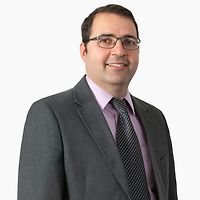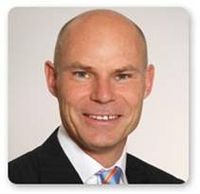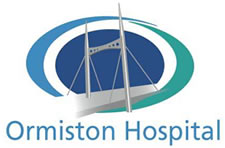Central Auckland, East Auckland, South Auckland > Private Hospitals & Specialists >
Ormiston Hospital Oral & Maxillofacial Surgery
Private Surgical Service, Oral & Maxillofacial Surgery
Description
Oral Surgery and Maxillofacial Surgery is surgery to correct a wide spectrum of disease, injuries and issues in the head, neck and face region. There are hard and soft tissues in this region that require treatment.
Consultants
-

Dr Muammar Abu-Serriah
Oral & Maxillofacial Surgeon
-

Mr Rakesh Jattan
Oral & Maxillofacial Surgery
-

Dr Nigel Parr
Oral & Maxillofacial Surgeon
-

Dr Chris Sealey
Oral & Maxillofacial Surgeon
Services Provided
Gum tissue at the site of the implant is opened up to expose the bone. The bone is drilled and a titanium implant is inserted where the root of your tooth had been. Once the bone and gum has healed (3-6 months), the post is attached to the implant and the crown is placed over the post and cemented into place.
Gum tissue at the site of the implant is opened up to expose the bone. The bone is drilled and a titanium implant is inserted where the root of your tooth had been. Once the bone and gum has healed (3-6 months), the post is attached to the implant and the crown is placed over the post and cemented into place.
Gum tissue at the site of the implant is opened up to expose the bone. The bone is drilled and a titanium implant is inserted where the root of your tooth had been. Once the bone and gum has healed (3-6 months), the post is attached to the implant and the crown is placed over the post and cemented into place.
Parotidectomy: an incision (cut) is made in front of the ear and runs down below the jaw line. Part or all of the parotid gland is removed. Superficial parotidectomy: an incision is made in front of the ear and runs down beneath the ear lobe. The superficial (top) lobe of the parotid gland is removed. Submandibular gland surgery: an incision is made just below the jaw bone and the submandibular gland removed.
Parotidectomy: an incision (cut) is made in front of the ear and runs down below the jaw line. Part or all of the parotid gland is removed. Superficial parotidectomy: an incision is made in front of the ear and runs down beneath the ear lobe. The superficial (top) lobe of the parotid gland is removed. Submandibular gland surgery: an incision is made just below the jaw bone and the submandibular gland removed.
Parotidectomy: an incision (cut) is made in front of the ear and runs down below the jaw line. Part or all of the parotid gland is removed.
Superficial parotidectomy: an incision is made in front of the ear and runs down beneath the ear lobe. The superficial (top) lobe of the parotid gland is removed.
Submandibular gland surgery: an incision is made just below the jaw bone and the submandibular gland removed.
Arthroscopic: several small incisions (cuts) are made over the joint in front of the ear. A small telescopic instrument with a tiny camera attached (arthroscope) is inserted, allowing the surgeon a view of the joint. Small instruments can be inserted into the other cuts to free up the joint by e.g. removing adhesions and scarring, or repositioning a disc. Arthroplasty (open surgery): an incision is made in front of the ear, giving the surgeon access to reconstruct the joint by e.g. smoothing joint surfaces, repairing discs or removing diseased tissue. If a joint replacement is necessary, a second incision under the angle of the jaw may be required.
Arthroscopic: several small incisions (cuts) are made over the joint in front of the ear. A small telescopic instrument with a tiny camera attached (arthroscope) is inserted, allowing the surgeon a view of the joint. Small instruments can be inserted into the other cuts to free up the joint by e.g. removing adhesions and scarring, or repositioning a disc. Arthroplasty (open surgery): an incision is made in front of the ear, giving the surgeon access to reconstruct the joint by e.g. smoothing joint surfaces, repairing discs or removing diseased tissue. If a joint replacement is necessary, a second incision under the angle of the jaw may be required.
Arthroscopic: several small incisions (cuts) are made over the joint in front of the ear. A small telescopic instrument with a tiny camera attached (arthroscope) is inserted, allowing the surgeon a view of the joint. Small instruments can be inserted into the other cuts to free up the joint by e.g. removing adhesions and scarring, or repositioning a disc.
Arthroplasty (open surgery): an incision is made in front of the ear, giving the surgeon access to reconstruct the joint by e.g. smoothing joint surfaces, repairing discs or removing diseased tissue. If a joint replacement is necessary, a second incision under the angle of the jaw may be required.
Wisdom teeth are the third molars right at the back of your mouth. They usually appear during your late teens or early twenties. If there is not enough room in your mouth they may partially erupt through the gum or not at all. This is referred to as an impacted wisdom tooth. Due to their location wisdom teeth can be difficult to clean and are more susceptible to decay, gum disease and recurrent infections. They can cause crowding of teeth and, on rare occasions, cysts and tumours develop around them. Your dentist will advise if some or all of your wisdom teeth need to be removed. Wisdom teeth will usually only be removed if your dentist believes they will be a significant compromise to your oral health. Impacted tooth extraction Your dentist may recommend extraction if you are at significantly greater risk of infection or tooth decay. Impacted teeth may be removed by your dentist or they may refer you to an oral & maxillofacial surgeon. An incision (cut) is made in your gum and access to the impacted tooth cleared by pushing aside gum tissue and, if necessary, removing some bone. The tooth is removed whole or in pieces and the gum stitched together over the hole.
Wisdom teeth are the third molars right at the back of your mouth. They usually appear during your late teens or early twenties. If there is not enough room in your mouth they may partially erupt through the gum or not at all. This is referred to as an impacted wisdom tooth. Due to their location wisdom teeth can be difficult to clean and are more susceptible to decay, gum disease and recurrent infections. They can cause crowding of teeth and, on rare occasions, cysts and tumours develop around them. Your dentist will advise if some or all of your wisdom teeth need to be removed. Wisdom teeth will usually only be removed if your dentist believes they will be a significant compromise to your oral health. Impacted tooth extraction Your dentist may recommend extraction if you are at significantly greater risk of infection or tooth decay. Impacted teeth may be removed by your dentist or they may refer you to an oral & maxillofacial surgeon. An incision (cut) is made in your gum and access to the impacted tooth cleared by pushing aside gum tissue and, if necessary, removing some bone. The tooth is removed whole or in pieces and the gum stitched together over the hole.
Wisdom teeth are the third molars right at the back of your mouth. They usually appear during your late teens or early twenties. If there is not enough room in your mouth they may partially erupt through the gum or not at all. This is referred to as an impacted wisdom tooth.
Due to their location wisdom teeth can be difficult to clean and are more susceptible to decay, gum disease and recurrent infections. They can cause crowding of teeth and, on rare occasions, cysts and tumours develop around them.
Your dentist will advise if some or all of your wisdom teeth need to be removed. Wisdom teeth will usually only be removed if your dentist believes they will be a significant compromise to your oral health.
Impacted tooth extraction
Your dentist may recommend extraction if you are at significantly greater risk of infection or tooth decay. Impacted teeth may be removed by your dentist or they may refer you to an oral & maxillofacial surgeon.
An incision (cut) is made in your gum and access to the impacted tooth cleared by pushing aside gum tissue and, if necessary, removing some bone. The tooth is removed whole or in pieces and the gum stitched together over the hole.
Website
Contact Details
Ormiston Hospital, 125 Ormiston Road, Flat Bush, Auckland
South Auckland
-
Phone
(09) 250 1157
Email
Website
125 Ormiston Road
Flat Bush
Auckland 2016
Street Address
125 Ormiston Road
Flat Bush
Auckland 2016
Postal Address
PO Box 38921
Howick
Auckland 2145
Was this page helpful?
This page was last updated at 10:57AM on May 11, 2023. This information is reviewed and edited by Ormiston Hospital Oral & Maxillofacial Surgery.

